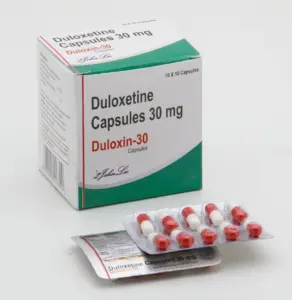Stendra, known chemically as avanafil, is a popular medication used to treat erectile dysfunction (ED). As one of the newer entrants into the market, it has gained attention for its rapid onset and effectiveness. In this comprehensive review, we will explore Stendra’s efficacy, safety, and how it compares to other ED medications like Viagra. Additionally, we’ll look into potential side effects and alternative treatments available.
Stendra is a prescription medication approved by the FDA to treat erectile dysfunction. It belongs to a class of drugs known as phosphodiesterase type 5 (PDE5) inhibitors. Like other ED medications, Stendra works by increasing blood flow to the penis, helping men achieve and maintain an erection.
The mechanism by which Stendra operates involves a sophisticated biochemical pathway. When a man is sexually aroused, the body releases nitric oxide. This molecule plays a crucial role in the sexual response by activating an enzyme that increases levels of cyclic guanosine monophosphate (cGMP). This, in turn, causes the smooth muscles in the penis to relax, allowing for increased blood flow. Stendra enhances this natural process by inhibiting the PDE5 enzyme, which breaks down cGMP, thereby facilitating prolonged erections.
Stendra is available in various dosages, typically ranging from 50 mg to 200 mg. The appropriate dose depends on individual needs and medical history. Physicians often recommend starting with a lower dose and adjusting as necessary. It is usually taken about 15 to 30 minutes before sexual activity, and it can be taken with or without food. However, it is essential not to exceed one dose per day to avoid potential side effects.
Not every individual with ED is a candidate for Stendra. Medical assessments help determine its suitability, taking into account factors like age, overall health, and other medications being used. For instance, men with certain cardiovascular conditions or those on nitrate medications may be advised against using Stendra. A thorough medical evaluation ensures that the use of Stendra is both safe and effective for the patient.
When a man is sexually stimulated, nitric oxide is released in the body. This chemical triggers a series of reactions that lead to the relaxation of muscles in the penis, allowing increased blood flow and resulting in an erection. Stendra enhances this process by inhibiting the PDE5 enzyme, which can restrict blood flow.
Nitric oxide is a critical component in the erection process. Upon sexual arousal, it is released in the penile tissue, activating the enzyme guanylate cyclase. This enzyme increases the production of cGMP, a messenger that promotes the relaxation of smooth muscle cells. By inhibiting the PDE5 enzyme, Stendra prevents the breakdown of cGMP, thereby sustaining higher levels in the body and enhancing the erectile response.
The role of PDE5 inhibitors is pivotal in managing ED. The PDE5 enzyme breaks down cGMP, which is necessary for achieving and maintaining an erection. By inhibiting this enzyme, Stendra helps maintain the levels of cGMP needed for a healthy erectile function. This biochemical intervention allows for improved blood flow to the penis, fostering better and more sustainable erections.
One of the notable features of Stendra is its rapid onset of action. Unlike some other ED medications, Stendra can begin working in as little as 15 minutes. This quick action is particularly advantageous for individuals who seek spontaneity in their sexual experiences. It provides flexibility and reduces the need for meticulous planning, making it a preferred choice for many men.
Stendra and Viagra (sildenafil) are both PDE5 inhibitors, but there are notable differences between them.
Stendra is known for its rapid onset. It can start working in as little as 15 minutes, whereas Viagra typically takes about 30 to 60 minutes. This faster onset can be a significant advantage for those who prefer not to wait, offering more spontaneity in planning intimate moments. The quick action of Stendra is often highlighted as a key differentiator from Viagra, appealing to men who value immediacy.
The effects of Stendra can last up to six hours, similar to Viagra. However, the duration of effectiveness can vary depending on individual metabolism and other factors. Both medications are effective, but some users report a preference for one over the other based on how long they feel the effects. Personal experiences with these medications can differ significantly, emphasizing the need for individualized treatment plans.
Stendra can be taken with or without food, which adds to its convenience. In contrast, a heavy meal can delay Viagra’s effectiveness, potentially complicating the timing of use. This flexibility with meals makes Stendra a more versatile choice for many users, allowing them to integrate the medication seamlessly into their lifestyle without dietary restrictions.
Both medications have similar side effects, but individual experiences may vary. Common side effects include headaches, flushing, and nasal congestion. However, some users may tolerate one medication better than the other. Personal tolerance and side effect profiles are important considerations when choosing between Stendra and Viagra, underscoring the importance of consulting with a healthcare provider.
Clinical studies have shown Stendra to be effective for many men with ED. In trials, a significant number of participants reported improved erections and successful intercourse. The rapid onset is a significant advantage for those seeking spontaneity in their sexual activities.
Clinical trials for Stendra have yielded promising results. These studies involved diverse groups of men with varying degrees of ED, demonstrating significant improvements in erectile function compared to placebo. Participants reported enhanced erection quality and increased rates of successful intercourse. The data from these trials highlight Stendra’s efficacy, reinforcing its reputation as a reliable ED treatment.
Many users have reported positive experiences with Stendra, praising its quick action and effectiveness. Testimonials often emphasize the freedom and spontaneity it offers, allowing for more natural and enjoyable sexual encounters. Users frequently cite satisfaction with the balance of efficacy and minimal side effects, contributing to its popularity among those seeking an effective ED solution.
Generic versions of Stendra, containing the same active ingredient, offer a more affordable option while maintaining similar efficacy. These generics provide a cost-effective alternative without compromising on quality or results. The availability of generic Stendra expands access to effective ED treatment, making it more accessible to a broader audience seeking cost-effective solutions.
Like all medications, Stendra comes with potential side effects. Understanding these can help users make informed decisions about their treatment options.
Some of the common side effects associated with Stendra include:
- Headache
- Flushing
- Nasal congestion
- Back pain
- Dizziness
These side effects are generally mild and tend to diminish as the body adjusts to the medication.
Mild side effects are common with PDE5 inhibitors, including Stendra. These often resolve on their own as the body becomes accustomed to the medication. Staying hydrated and taking the medication with food may help mitigate certain side effects like headaches and flushing. Users are encouraged to monitor their symptoms and report any persistent issues to their healthcare provider for further guidance.
Although rare, serious side effects can occur. These include:
- Sudden vision loss
- Hearing loss
- Priapism (prolonged erection)
If any of these occur, immediate medical attention is necessary.
Certain individuals may be at higher risk for serious side effects. Those with pre-existing eye or ear conditions, or those taking certain medications like nitrates, should exercise caution. A thorough medical evaluation can help identify potential risk factors and ensure the safe use of Stendra. Regular follow-ups with a healthcare provider are advised to monitor for any adverse effects and adjust treatment as necessary.
For those who may not find Stendra effective or suitable, several alternatives are available.
- Viagra (Sildenafil): The first PDE5 inhibitor on the market, known for its effectiveness.
- Cialis (Tadalafil): Known for its long duration, lasting up to 36 hours.
- Levitra (Vardenafil): Similar to Viagra in terms of onset and duration.
Each PDE5 inhibitor has unique characteristics that may make it more suitable for certain individuals. Viagra’s long-standing reputation is matched by Cialis’s extended duration of action, which is beneficial for those seeking longer periods of readiness. Levitra offers a balance between onset and duration, providing another viable option for managing ED. Understanding these differences can guide users in selecting the most appropriate treatment.
- Lifestyle Changes: Regular exercise, a healthy diet, and stress reduction can improve ED.
- Supplements: Some natural supplements claim to aid in ED, but their efficacy is often not scientifically proven.
Non-prescription options can complement medical treatments or serve as alternatives for those unable to use PDE5 inhibitors. Lifestyle modifications, such as improving diet and exercise routines, can have a positive impact on erectile function. However, caution is advised with supplements, as many lack rigorous testing and may interact with other medications. Consulting a healthcare provider before trying these options is recommended to ensure safety and efficacy.
Before starting any ED treatment, consulting a healthcare provider is essential. They can assess your overall health, review any potential interactions with other medications, and help determine the most appropriate treatment.
- Medical History: Your provider will consider any pre-existing conditions, such as heart disease or high blood pressure.
- Medication Interactions: Be sure to discuss all medications you are taking to avoid harmful interactions.
- Lifestyle Factors: Addressing lifestyle factors that may contribute to ED can enhance treatment outcomes.
Preparation for a healthcare appointment can enhance the quality of care received. Patients should be ready to discuss their full medical history, including any medications or supplements they are taking. Bringing a list of questions or concerns can help guide the conversation and ensure all relevant topics are covered. Being open and honest about symptoms and lifestyle factors can aid in developing a comprehensive treatment plan.
ED treatment often requires ongoing management and periodic reassessment. Regular follow-up appointments with a healthcare provider allow for monitoring of treatment efficacy and side effects. Adjustments to medication or lifestyle interventions may be necessary over time to optimize outcomes. Continuous communication with a healthcare provider ensures that the chosen treatment remains effective and safe for the patient.
Stendra presents a viable option for treating erectile dysfunction, offering quick onset and effective results for many men. While it shares similarities with other PDE5 inhibitors, its rapid action and flexibility with meals make it appealing to those seeking convenience. Understanding its efficacy, safety, and alternatives can guide individuals in making informed decisions about their ED treatment. Always consult with a healthcare provider to ensure the best care tailored to your needs.



